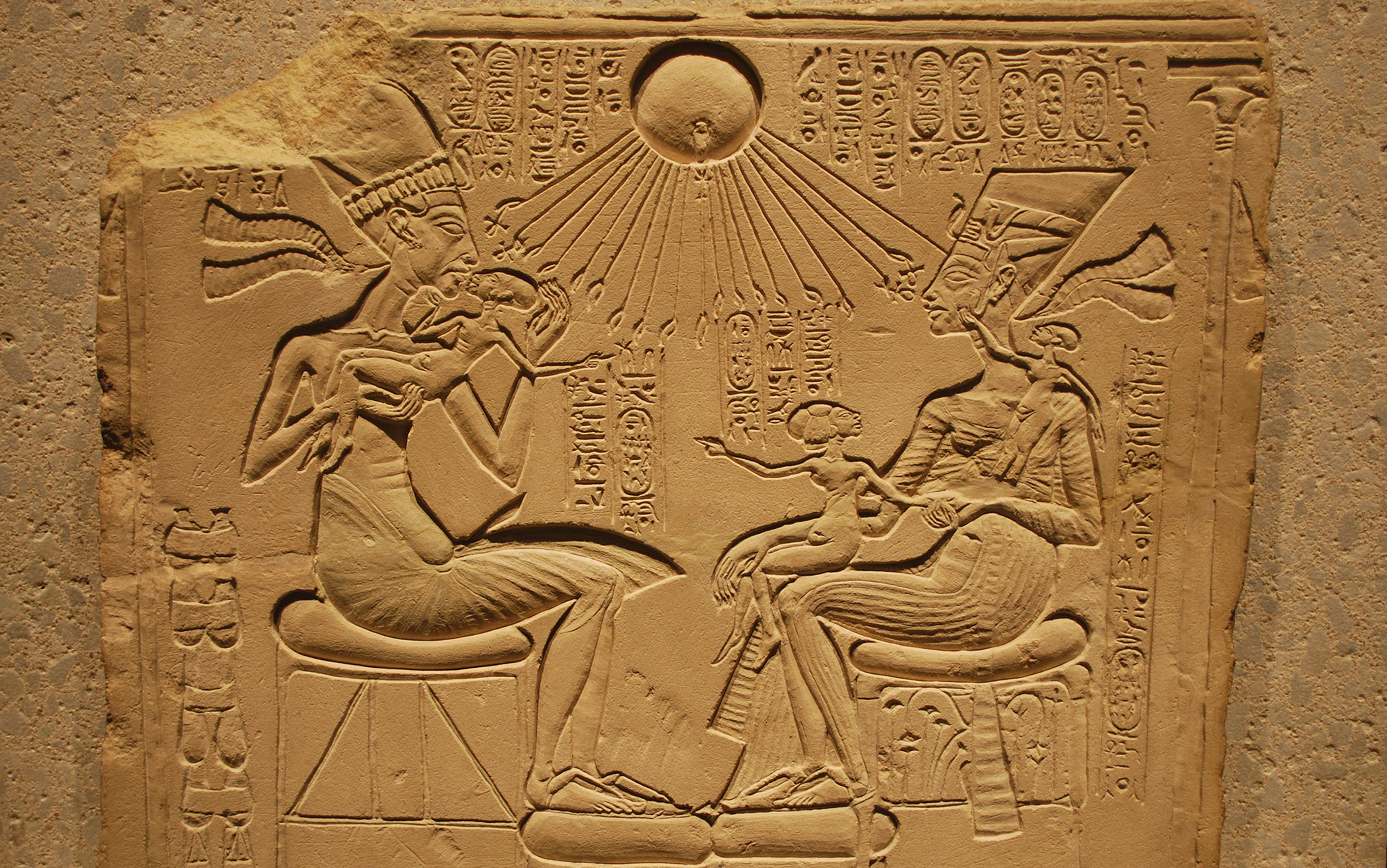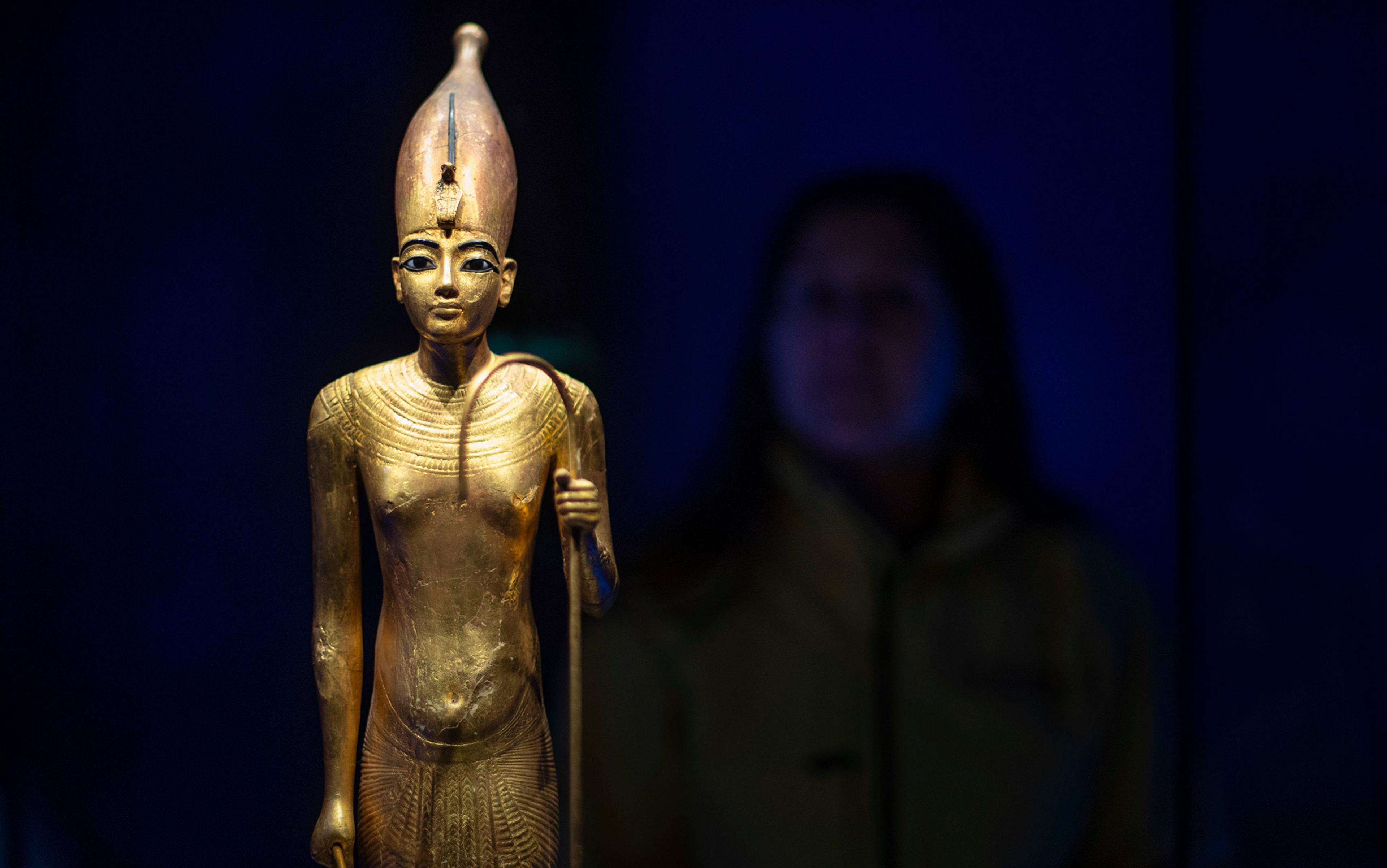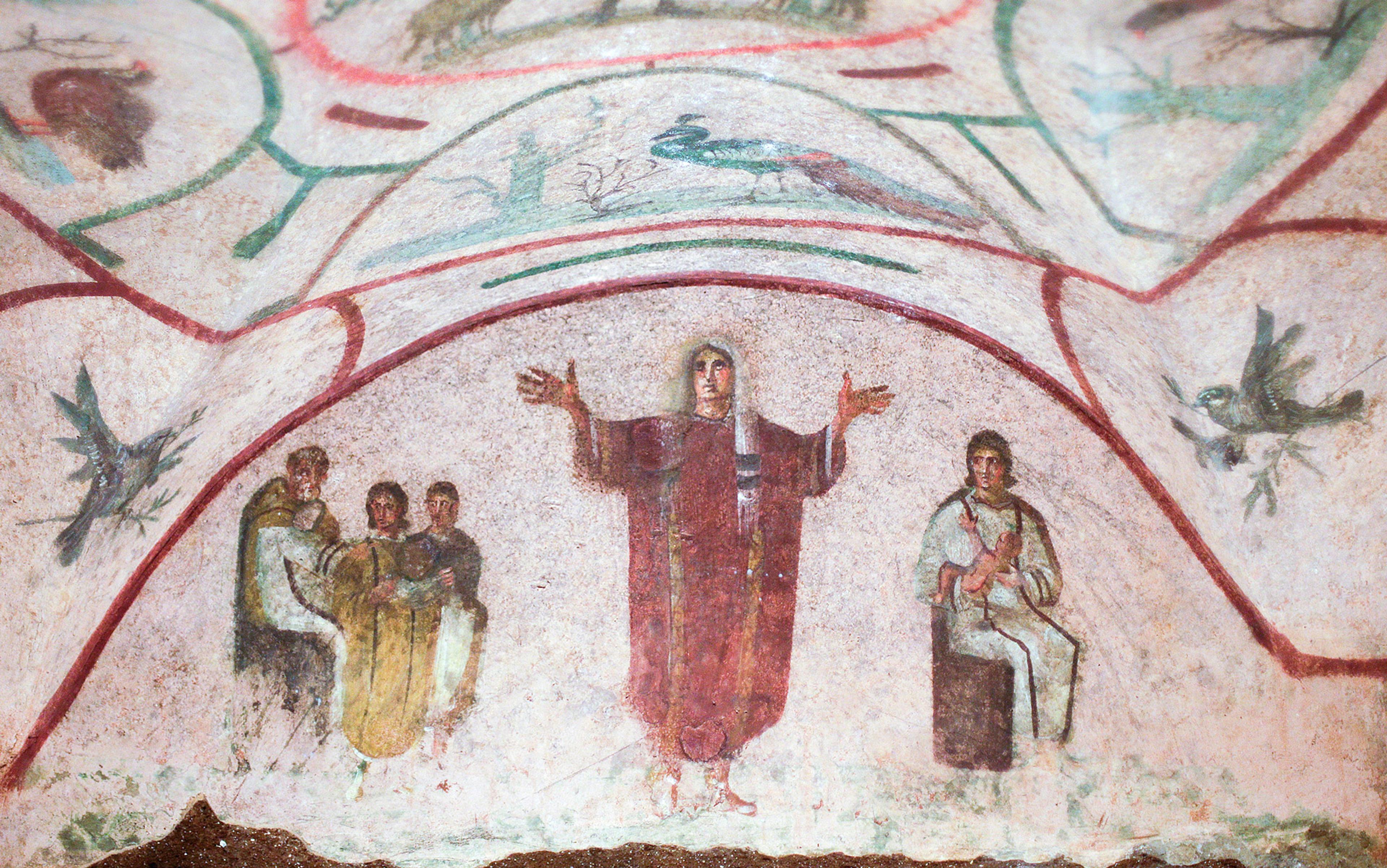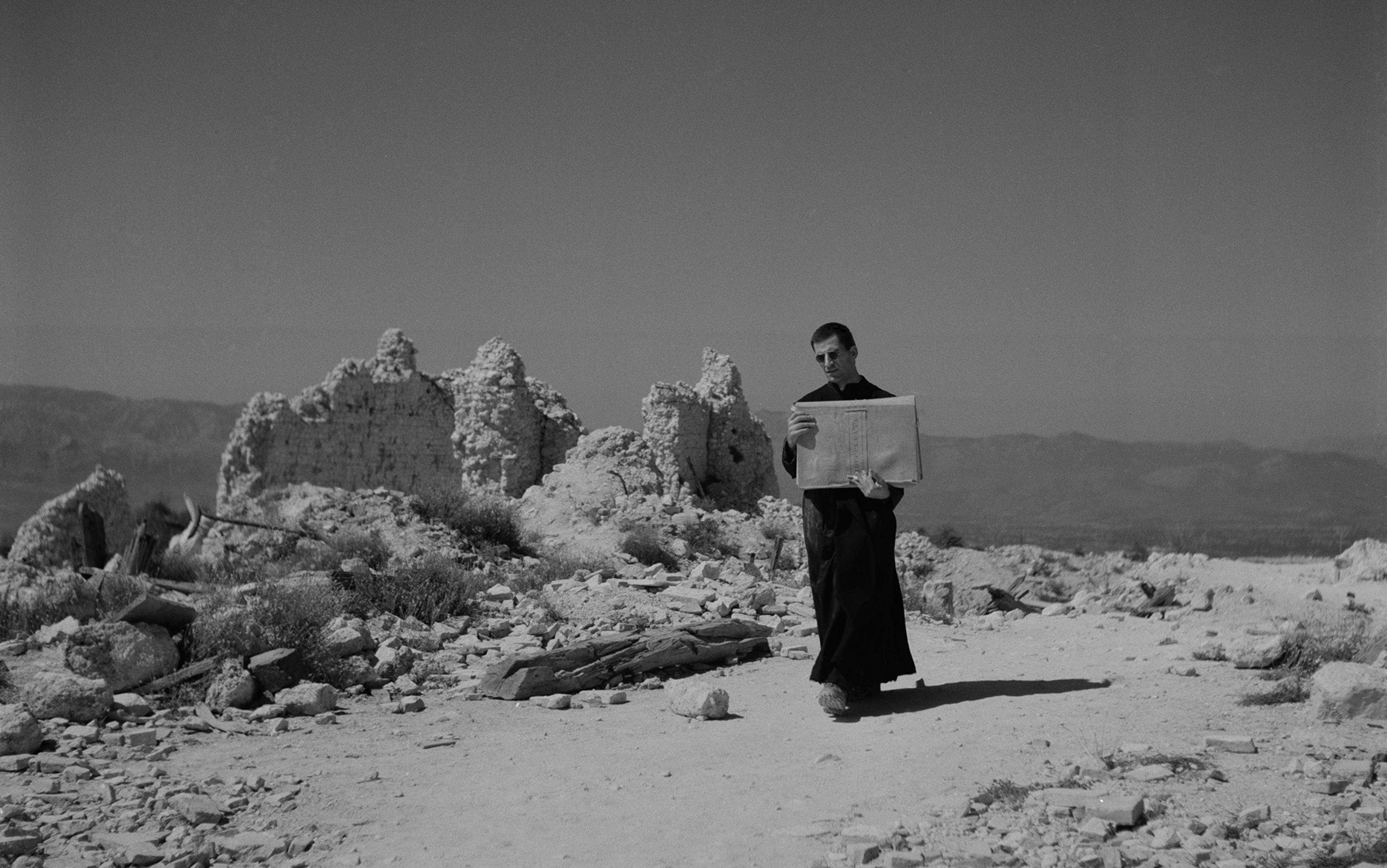More than 3,000 years ago, ancient Egypt, with its myriad gods and goddesses, saw the founding of two monotheistic religions within a century of each other. One is associated with Moses, the Bible and ancient Israel’s faith, which is the foundation of Judaism and Christianity. The other burst on to the scene around 1350 BCE, flourished for a moment, and was then eclipsed when its founder died in 1336 BCE. We call the religion Atenism. Where did it come from? And why didn’t the world’s first monotheism last?
In the 4th millennium BCE, there were two distinct cultures in Egypt: one in the Delta (north) region, the other in the south. This geographical and political dualism had its counterpart in religion. In the north, the most powerful god in the Egyptian pantheon was Re, the sun god. His cult centre was in a suburb of present-day Cairo, still known by the ancient Greek name Heliopolis, ‘City of the Sun’, and his principal icon was a pyramid-shaped stone called the benben. The pyramids and obelisks still familiar today owe their shape and symbolic significance to this ancient solar image. By his agency, Re created other gods, over which he was chief, as well as humans. Re’s son was Horus the sky-god, represented as a falcon, and the Pharaohs were the incarnation of Horus. So their title was ‘Son of Re’.
Meanwhile, in the southern town of Thebes (modern Luxor), the god Amen emerged as the most powerful religious force. As his name suggests in ancient Egyptian, Amen is the ‘hidden one’ and is often depicted in human form with blue skin, representing the blue sky or atmosphere. Amen’s principal cult centre was Karnak Temple in Thebes. Around 2000 BCE, then, there were two dominant deities in Egypt: Re, who reigned in the north, and Amen, who ruled the south.
Northern and southern Egypt were embroiled in civil war between c2150 and 2000 BCE. Rival pharaohs ruled Egypt, resulting in parallel kingships based in Memphis in the north and Thebes in the south. It was left to an 11th-dynasty ruler, the Theban Mentuhotep II to unify the land through war around 2000 BCE. By around 1950 BCE, Amenemhet – meaning ‘Amen is foremost’ – founded another dynasty, the 12th. He was the first to incorporate Amen into his name. Amen’s time had come. In a unifying gesture, Amenemhet moved the capital north, back to the Memphis area where Upper and Lower Egypt meet, with his devotion to Amen intact. He called his new capital Itj-tawy, ‘Seizer of the Two-Lands’, and likely here he fused together Amen and Re into a single, powerful deity: Amen-Re, who was called ‘the king of the gods’. Amen-Re’s influence spread through all Egypt, and for 600 years he had no rival atop the pantheon. Karnak mushroomed into the largest temple complex in ancient Egypt as ruler after ruler honoured this god, his consort, Mut, and Khonsu, their son.
The Karnak complex expanded significantly between 1500 and 1350 BCE when the 18th-dynasty monarchs ruled. While Memphis remained the political capital, Thebes was considered the imperial capital. From Karnak, divine oracles directed the kings to conquer neighbouring lands, and they duly obliged. Egypt’s empire stretched north and east to beyond even the Euphrates River, and in the south, Nubia, the northern half of Sudan, was colonised. Tribute and booty poured into Egypt during this century and a half, with Karnak Temple and its powerful priesthood the major recipients. There is no greater testimony to the prosperity of this era than the colossal building projects of Amenhotep III (1390-1353 BCE) at Karnak and Luxor Temples, largely in the name of Amen-Re. Egypt and its god Amen-Re had reached the zenith of power. But no one could have foreseen how quickly things would change with the death of Amenhotep III.
The crown-prince Thutmose, eldest son of Amenhotep III, was set to follow his father to the throne. However, the prince died unexpectedly, leaving the succession to his younger brother. This prince, also called Amenhotep, might have been only in his mid-teens when his father died in the 38th year of kingship, around 1353 BCE, when he became Amenhotep IV. His youth is demonstrated in a carved scene in the tomb of a high-ranking official named Kheruef where the new king is shown making offerings to the gods under the watchful auspices of his mother, rather than standing alone or with his queen, the famous Nefertiti. The gods to which he is depicted making offers are Atum and Re-Horakhty (both solar deities). Atum is presented as a human with a kingly crown on his head, while Re-Horakhty is a human with the head of a falcon, a sun-disc upon the raptor’s head. It appears that, from the outset, Amenhotep IV had an affinity for traditional sun-gods. He was not yet a monotheist.
Based on an inscription dated to regnal year 1 of Amenhotep IV at the sandstone quarry of Gebel el-Silsileh (south of Luxor), we learn that here the new king began his first building project. It records the hewing out of a large benben stone for ‘Re-Horakhty who rejoices in his horizon in his name of Shu which (or who) is in the Aten in Karnak’. This lengthy name seems to be a theological creed, and is often called the ‘didactic name’ of Aten. No earlier form of the sun-god employed such a lengthy name. So this is new.
Little is known about this temple as it was destroyed after the king’s death, and the blocks reused to build other edifices in the area. Only a handful of decorated and inscribed blocks have survived, and some remain partially visible in the 10th Pylon or gateway at Karnak. One of these blocks, which now graces the Egyptian Museum in Berlin, shows the new deity: ‘Re-Horakhty who rejoices in his horizon in his name of Shu which is in the Aten’. Only the head of the falcon is preserved. A large sun-disc sits on its head, which has a cobra wrapped around the disc with its head flaring up just above the falcon’s beak. This initial representation of the sun-god looks just like the solar deity, Re-Horakhty. On the right side of the scene, the king himself is depicted and above him the lower portion of a sun-disc is preserved. It has cobras on both sides, and hanging from their necks is an ankh-sign, the so-called key of life. Three more ankhs are connected to the underside of the Sun.
Something changed, and the king built at least four temples to Aten
Another block believed to be from this same temple preserves only a portion of a larger scene. It too contains the creedal name, but it depicts the image of the god Shu, whose name occurs in the creedal formula, along with his wife, Tefnut. Here, she is called ‘the father of the gods’, and the first god created by Atum is associated with atmospheric or cosmic light. It is clear from this early temple block that the introduction of this new form of the sun-god did not preclude mentioning primordial deities such as Shu and Tefnut. That means that Amenhotep had no aversion to ‘the gods’: at this stage, he could not even be called a henotheist, or one who worships one deity without rejecting the existence of others.
But something changed between the king’s second and fourth regnal years. During this period, he built at least four temples to Aten in eastern Karnak. These sanctuaries were later dismantled, but thanks to the Egyptian penchant for recycling building material, the temple blocks were reused elsewhere. Over the past few decades, tens of thousands of inscribed blocks from these later edifices have been collected by Egyptologists. Over time, they have become dilapidated, thereby exposing the earlier stone. The sandstone blocks in question were of a different size than those used to construct previous temples (called talatat by Egyptologists). Because of their unique size, they are easily recognisable when reused.
Efforts to piece together this massive jigsaw puzzle (actually four puzzles!) have been a challenge, but some impressive scenes have been reconstructed on paper from drawings and photographs of the decorated blocks. From these scenes, the four original temples were identified. One key Egyptologist leading the effort to assemble the blocks was the historian Donald Redford (then of the University of Toronto), who sought to glean as much information as possible from the scenes about the formative years of Atenism.
In 1925, French Egyptologists working at Karnak Temple were summoned to examine some strange demolished statues that were uncovered outside the eastern wall of the temple complex during the excavation of a drainage canal. After exposing more of the statues, which turned out to represent Akhenaten and temple blocks, the work was abandoned, and the area largely forgotten. Fifty years elapsed before work resumed in 1975. As a graduate student, I had the privilege of working with Redford on these excavations between 1975 and 1977. We re-excavated the now-covered area exposed in 1925, and then moved north where we uncovered the southwest corner. Years later, the northwest corner was found too.
Between the corners, an entrance was cleared where the avenue of statues continued west, perhaps toward one or more of the other Aten temples. The telltale talatat blocks were used throughout. The western wall was 715 feet (220 metres) wide. Ongoing work has uncovered traces of talatat walls and statue fragments below the village farther to the east of our excavation area, showing that it was a square structure. This makes it the single largest temple built at Karnak up till that time. And the name of the temple, critical to understanding the origins of Atenism, is found on talatat blocks: Gemet Pa-Aten, ‘The Aten is Found’.
By studying the carved reliefs and texts on the blocks, a number of conclusions could be reached about this new religion. Significantly, it was within the large, open courtyard that a royal jubilee was celebrated, and in fact this might have been the main function of Gemet Pa-Aten. Royal jubilees were normally celebrated on or around the 30th anniversary of the coronation (that’s when Amenhotep III did his), and they rejuvenated the kingship. At around age 19-20, Akhenaten surely did not need such a boost!
At coronation, the throne name of the king was revealed. When construction on Gem Pa-Aten began, in the 2nd or 3rd regnal year, the king still used his birth name Amenhotep. But before the project was completed around his 4th or 5th year, without explanation he dropped that name and adopted the name by which he is known in history: Akhenaten. It means ‘He who is beneficial to the Aten’. The blocks from early in the project that had ‘Amenhotep’ written on them were erased and replaced by his new name.
Images of other deities were expunged, and the plural writing for ‘gods’ scratched off
The iconography of the deity in this temple (and the others at Karnak) was altered to reflect the king’s changing theology. The falcon image virtually disappears, only to be replaced by the ubiquitous sun-disc with extended Sun rays, and the extended name ‘Re-Horakhty who rejoices in his horizon in his name of Shu which is in the Aten’ is written in a cartouche, a device used to identify royal names. With the jubilee, Akhenaten seems to signal that the Aten was now the ultimate ruler, replacing Amen-Re.
This alteration of the king’s name was the first step in a programme to exterminate Egypt’s most powerful deity. What followed was a systematic programme of iconoclasm in which images of Amen and writings of his name throughout Egypt were desecrated and removed. Beyond Egypt’s north Sinai border, in recent excavations I directed, limestone door lintels inscribed with the name of Amenhotep II (Akhenaten’s great-grandfather) were uncovered. Here too, ‘Amen’ was obliterated from the cartouche, and so was Amen-Re’s name. The zealots were careful, however to preserve the writing of Re, which is written with the sun-disc sign (the same hieroglyph used in Aten’s name). The temples of his father, Amenhotep III, were not off-limits. ‘Amen’ is hacked out of the cartouches and images of Amen were erased, even in temples in distant Nubia (Sudan). In some instances, images of other deities were also expunged, and there are cases where the plural writing for ‘gods’ (netjeru) had been scratched off.
A decision was also reached around the 5th or 6th year to abandon Thebes and establish a new capital in middle Egypt called Akhet-Aten (also known by the modern Arabic name ‘Amarna’), meaning ‘the Horizon of Aten’. This pristine land had not been sacred to any deity before. No city or temples previously stood there. Only temples to Aten were built there, and the largest was called Gemet Pa-Aten. With the move of the royal family to Akhet-Aten, a third and final form of Aten’s name is introduced: ‘Living Re, Ruler of the Horizon, Rejoicing in the Horizon in His Name of “Re, the Father, who has come as the Aten”’. Gone are ‘Horakhty’ and ‘Shu’, two deities, and only Re the sun-god who manifests his power in or through the visible Aten or sun-disc remains. The king no longer tolerated any divine name or personification of a force of nature that could be construed as another deity.
The exclusivity of Aten and the campaign to exterminate Amen and other deities is proof positive of a movement from polytheism to monotheism. If doubt remains that Akhenaten was a monotheist, consider some elegant and touching lines in The Great Hymn to the Aten, inscribed on the wall of the tomb of the high official named Aye at Amarna:
O sole god beside who there is none …
You create the earth according to your desire, you alone:
People, all large and small animals, all things which are on earth, which walk on legs,
Which rise up and fly with their wings.
The foreign lands of Syria and Nubia, (and) the land of Egypt …
The lord of every land who rises for them, the Aten of daytime, whose awesomeness is great.
(Now concerning) all distant countries, you make their life …
(O you) who gives life to the son in his mother’s womb, and calms him by stopping his tears;
Nurse in the womb, who gives breath to enliven all he makes …
The themes of universalism, divine oneness, the exclusivity of Aten and his tender care for all creation drive home the point that ‘there is none’ beside Aten. This is a monotheistic statement not unlike the Islamic confession ‘there is no god but God’. And on the theme of divine oneness, the Jewish Shema comes to mind: ‘Hear O Israel, the LORD our God, the LORD is one.’ The sun-god was a universal deity: wherever one went in the world, the Sun appears.
Atenism was a monotheistic experiment. But what instigated such a radical shift from the polytheistic orthodoxy that had flourished in Egypt for millennia, and what led to the demotion of Amen-Re from his preeminent status, a position he had held for centuries? Here, there is little agreement among Egyptologists. There are those who think that this religious move was designed to wrest power from the Amen priesthood’s dominance that challenged the crown itself. Simply put, it was a political move. But this view does not adequately consider Akhenaten’s genuine devotion to Aten as reflected in the incredible temples dedicated to him, not to mention the intimacy expressed towards Aten in the hymns.
Others consider Atenism to be simply the climax of an evolution that had been underway for more than a century, in which Re had been moving towards universal status. This interpretation, however, does not take into account the programme of iconoclasm towards Amen and other deities, and the disappearance of traditional images of the sun-god (human form, falcon head, pyramid images, etc). One could advance Aten without eradicating Amen in a polytheistic system.
My theory is that Akhenaten himself very early in his reign (or even just before) experienced a theophany – a dream or some sort of divine manifestation – in which he believed that Aten spoke to him. This encounter launched his movement which took seven to nine years to fully crystallise as exclusive monotheism. Great idea, but based on what evidence? Mention has already been made of the two major Aten Temples called Gemet Pa-Aten constructed at Karnak and Akhet-Aten. A third temple by the same name was built in Nubia. Three temples with the same name is unprecedented, and suggests that its meaning, ‘The Aten is Found’, was vitally important to the young king’s religious programme. Could the name of the three sanctuaries memorialise the dramatic theophany that set off the revolution?
Akhenaten also uses the same language of discovery to explain how he found the land where he would establish the new city, Akhet-Aten. The aforementioned boundary inscription records Akhenaten’s words when travelling through the area that would become his new capital:
Look, Aten! The Aten wishes to have [something] made for him as a monument … (namely) Akhet-Aten … It is Aten, my father, [who advised me] concerning it so it could be made for him as Akhet-Aten.
Later in the same inscription, the king again repeats the line: ‘It is my father Aten who advised me concerning it.’ These texts point to an initial phenomenological event in which the king discovered the new form of the sun-god and then, through a later revelation, Aten disclosed where his Holy See should be built.
With Atenism, the evolution from polytheism to monotheism occurred rapidly, in just a few years
Historians of religion over the past 150 years thought that such a shift to monotheism must have been a gradual development taking place over millennia. Just like every field of learning in the 19th and early 20th centuries, the academic study of religion was shaped by evolutionary philosophy, an extension of Darwinian thought. From this perspective, religion began in the hoary past from animism, where everything – trees, rivers, rocks, etc – was possessed by spirits; followed by totemism; then polytheism; henotheism; culminating finally in monotheism. This linear development took thousands of years, it is claimed, moving from simple to complex forms. Some thinkers maintain that monotheism was achieved in the 6th and 5th centuries BCE for the ancient Jews, a development mirrored among Greek philosophers, in Zoroastrianism and other Asian religions during the same general period. But with Atenism, as the evidence suggests, the evolution from polytheism to monotheism occurred rapidly, in just a few years, contrary to the traditional understanding that monotheism appeared eight centuries later.
Some have toyed with the idea that either Moses influenced Akhenaten or vice versa. Indeed, Sigmund Freud in his book Moses and Monotheism (1939) opined: ‘I venture now to draw the following conclusion: if Moses was an Egyptian and if he transmitted to the Jews his own religion, then it was that of Ikhnaton, the Aton religion.’ But there is simply no evidence for such a connection. As noted, Akhet-Aten was located in central Egypt, more than 200 miles away from the Land of Goshen in the northeastern delta where the Bible places the Hebrews. Based on an inscription made upon the stones that marked the city’s boundaries, Akhenaten vows that he would never leave this sacred zone: ‘I shall not pass beyond it.’ This means that the kind of contact between Moses and the Pharaoh reported in the book of Exodus could not have occurred given the distance between the two.
The main reason I reject the theory of one religion impacting the other is that each one is based on its own theophany. The Lord God appeared to Moses at the burning bush in Sinai and revealed his name, Yahweh, according to Exodus. Akhenaten had his own divine encounter that gave rise to Atenism. Put another way, both religions stand on their own distinctive revelations.
Typically, what is needed for a religion to endure is that a leader or prophet who believes he or she received a divine message has a band of faithful followers to disseminate the tradition, and a set of authoritative writings is preserved for future generations. This is the case of Moses and the Torah (the Law). Similar is the case for Christianity with Jesus, his apostles and the New Testament Scriptures, and likewise Muhammad and the origins of Islam and the Quran, as well as Joseph Smith, the Latter Day Saints and the book of Mormon.
Akhenaten’s movement lacked followers who shared his convictions so that, when he died, his family and the priests and officials who had served him jettisoned Atenism and restored Amen-Re atop the pantheon of deities and reopened closed temples. His daughters, whose birth names all included ‘Aten’, were renamed with Amen instead, and his eventual successor traded in his previous name: Tut-ankh-aten became Tut-ankh-amen. Aten’s temples were demolished, the great city Akhetaten was deserted, and the various hymns to Aten that expressed the theology of his religion remained memories on the walls of tombs. Not one of these has been found in later writing to indicate that a scriptural tradition resulted.
If indeed Moses lived in the 13th century BCE as many scholars today believe, then it seems likely that Akhenaten was the first human in recorded history to embrace the exclusive worship of one god. But it is the teaching of one God expressed in the Hebrew Bible that has endured the test of time, and remains the longest lasting monotheistic religion. Atenism was an idea whose time hadn’t yet come: a shade of the great monotheisms to be.






